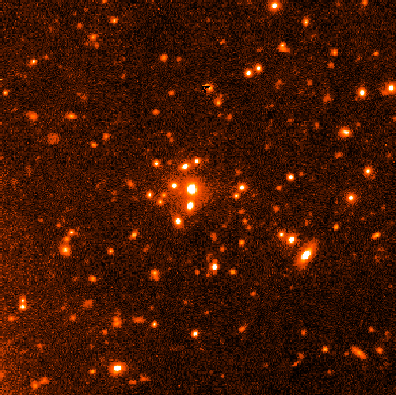


| The source numbered 256 above is in this rich cluster, at z=0.64. From Keck spectroscopy of 10 galaxies in this field, we derive a velocity dispersion of 1000 km/s, comparable to the Coma cluster. |
Our collaboration is beginning a systematic imaging survey of 80 bent doubles which have NO optical counterparts on the Digitized Sky Survey. The hope is that these radio sources mark the locations of distant clusters (z > 1).